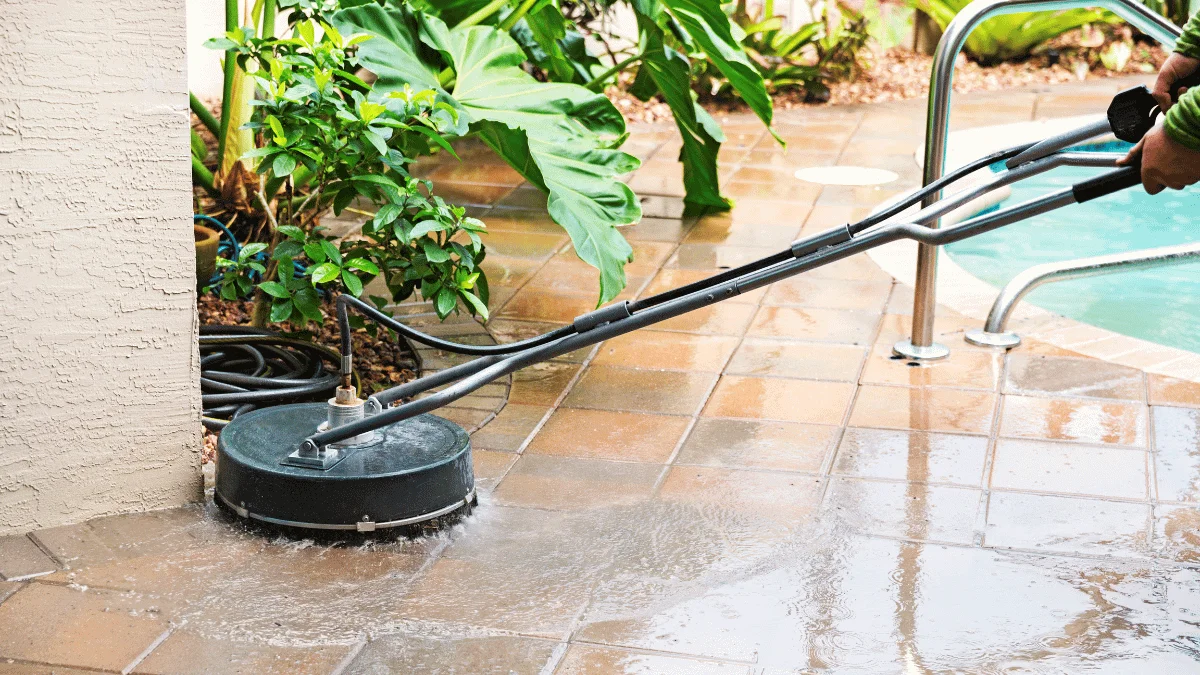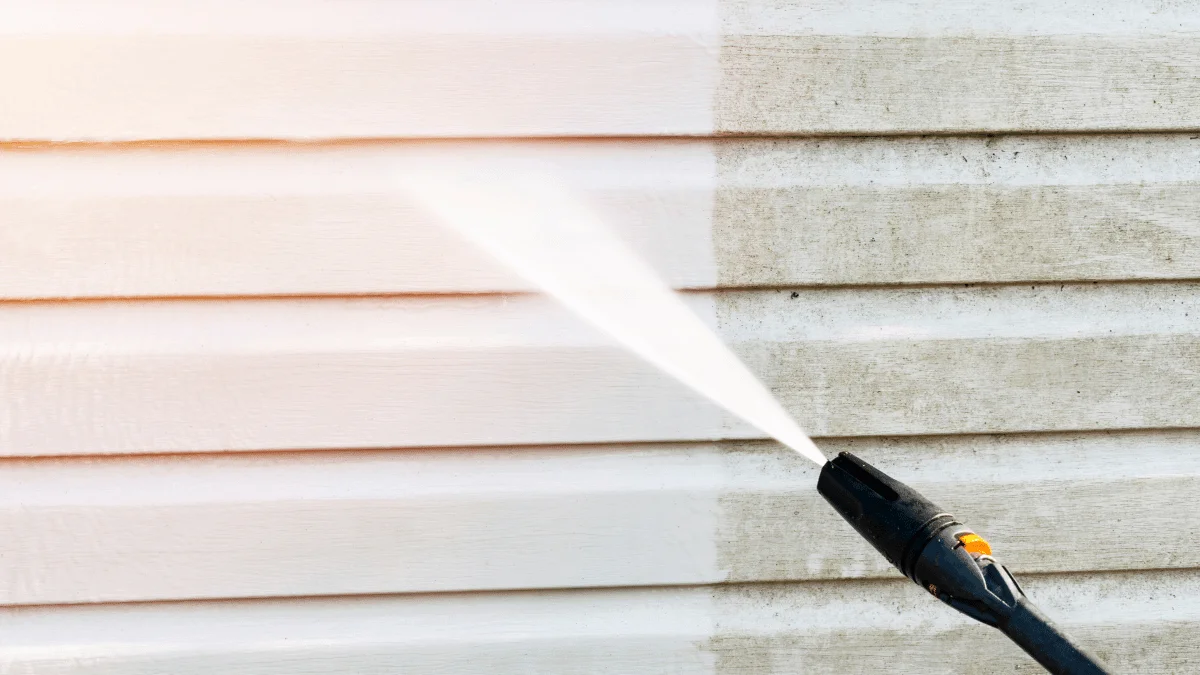How Often Should You Clean Solar Panels in Colorado’s Climate
Your solar panels are working hard under the Colorado sun, but are they performing at their best? The unique Centennial State climate presents specific challenges that can impact their efficiency.
From the dusty plains winds to heavy spring pollen, Colorado’s environment creates a perfect storm for solar panel contamination. Add in wildfire smoke, construction dust, and our intense high-altitude sunlight, and you’ve got conditions that can significantly reduce your system’s energy output.
This guide will help you understand exactly how often you should clean solar panels in Colorado to ensure you’re getting the maximum energy output and protecting your valuable investment. We’ll explore Colorado’s specific climate factors, signs that your panels need cleaning, the benefits of professional services, and how to create the perfect cleaning schedule for your home.
Colorado’s Unique Climate and Your Solar Panels
The Impact of High Altitude and Intense Sun
Colorado’s high altitude means the sun’s rays are more direct and intense than at sea level. While this creates excellent conditions for solar energy production, it also means your panels are more susceptible to efficiency loss when dirty. A layer of grime doesn’t just block sunlight—it traps heat against the panel surface, causing thermal stress that can damage components over time.
From Wildfire Smoke to Construction Dust
Summer wildfire smoke has become an increasingly common challenge for Colorado homeowners. This fine ash settles on panel surfaces, creating a film that significantly reduces light transmission. Combined with dust from Colorado’s frequent construction projects and development, your panels can quickly accumulate a performance-hindering layer.
Pollen Season in the Rockies
Spring and summer bring heavy pollen from Colorado’s abundant trees—aspens, pines, and cottonwoods coat everything in a thick yellow-green dust. This biological material doesn’t just rinse away with light rain; it forms a sticky coating that directly blocks sunlight from reaching your solar cells.
The Four-Season Challenge: A Yearly Cleaning Breakdown
Spring Cleaning After the Thaw
After Colorado’s snow melts, it often leaves behind accumulated dirt, road salt, and winter grime on your panels. Spring cleaning is crucial to clear away winter’s residue and prepare for peak energy production during the long summer days. This timing is perfect because you’re removing months of buildup right before your panels enter their most productive season.
Summer Maintenance: Pollen and Ash
Mid-year solid panel cleaning addresses accumulated pollen, dust, and potential wildfire ash during Colorado’s most productive solar months. Summer storms can actually make things worse by turning dry dust into muddy streaks that bake onto hot panels. During peak pollen season (typically May through July), some homeowners notice weekly efficiency drops that warrant professional attention.
Autumn Prep: Clearing Leaves and Debris
Fall brings fallen leaves, especially from pine trees, which can cause significant shading and create damp, stuck-on messes. Even a few leaves covering solar cells can disproportionately impact your system’s output due to how solar panels are wired in series. Pine needles are particularly problematic because they’re small, numerous, and tend to get trapped in panel frames.
Winter Watch: Is Snow a Problem?
Snow management is often misunderstood by Colorado homeowners. While light, powdery snow may slide off steep-angled panels, wet heavy snow can linger for days, and even a light dusting can stop energy production entirely. However, attempting to remove snow yourself is dangerous and can damage panels.
How to Tell When Your Panels Need a Wash
Monitoring Your Energy Output
Your monitoring app is your best diagnostic tool for determining cleaning needs. Look for production dips that don’t correspond with cloudy weather patterns—this usually indicates dirt accumulation. Compare current output to the same period in previous years; a 10-15% drop often signals it’s cleaning time.
The Visual Inspection Test
From ground level, look for visible dirt layers, streaks, or noticeable bird droppings on your panels. If you can see contamination from the ground, it’s already reducing efficiency significantly. Use binoculars for a closer look at hard-to-see areas.
After a Major Weather or Environmental Event
Schedule inspections after Colorado-specific events like windstorms bringing dust from the eastern plains, nearby construction projects, or periods of hazy, smoky skies from wildfires. Dust storms can coat panels in a single day, while construction dust is particularly problematic because it contains fine particles that bond strongly to glass surfaces.
The “Rainfall Rinse” Myth in a Semi-Arid Climate
Why Colorado’s Rain Isn’t a Cleaning Solution
Colorado receives only 12-16 inches of annual precipitation, and most comes as light showers or brief thunderstorms. This infrequent, light rainfall doesn’t provide enough water volume or duration to effectively rinse away accumulated grime. Instead of cleaning, these light rains often just redistribute dirt or create muddy streaks that dry into harder-to-remove stains under our intense sunlight.
Hard Water Spots and Residue
Colorado’s water contains high mineral content, and rainwater picks up additional minerals as it moves through our atmosphere and across surfaces. When this mineral-rich water evaporates under intense high-altitude sun, it leaves behind calcium and magnesium deposits that actually attract more dust and dirt.
The Car Windshield Analogy
Think about what happens to your car windshield after a light Colorado rain—it often looks spottier and dirtier than before. The same thing happens to solar panels, but the consequences are much more significant for energy production. Just as you wouldn’t rely on rain to keep your windshield clean for optimal visibility, you shouldn’t depend on occasional showers to maintain your solar investment.
Cultivate House Detailing: Expert Care for Colorado Panels
Local Expertise for Local Problems
Colorado’s unique climate challenges require local expertise and specialized knowledge. Cultivate House Detailing understands the specific problems Colorado homeowners face—from pine pollen that bonds to glass surfaces to construction dust that requires special removal techniques.
Our Purified Water Cleaning System
We use a specialized water purification system that removes all minerals, ensuring a spot-free, streak-free finish that stays cleaner longer. This deionized water doesn’t leave any residue behind that could attract more dirt, breaking the cycle of rapid re-contamination that plagues panels cleaned with regular tap water.
Safe, Insured, and Warranty-Compliant
Our team is trained and insured to work safely on roofs, using proper safety equipment and techniques. We use gentle, non-abrasive methods that protect your panels’ sensitive anti-reflective coatings and maintain your manufacturer’s warranty coverage. Many DIY cleaning attempts void warranties due to improper techniques or equipment, but our professional approach ensures your investment stays protected while maximizing performance.
DIY Dangers: Why Cleaning Solar Panels Isn’t a Simple Chore
The Risk of Roof-Related Accidents
Working on roofs is inherently dangerous, and the risk simply isn’t worth the modest savings of DIY cleaning. Colorado’s variable weather can make roof surfaces unexpectedly slippery, and many homes have steep roof pitches that increase fall risks. Professional cleaning services have insurance, safety equipment, and training that protect both the technician and your property from accident-related damage.
Damaging Your Investment
Solar panels have delicate anti-reflective coatings and tempered glass surfaces that can be permanently damaged by improper cleaning. Using the wrong brush can create microscopic scratches, excessive pressure can damage seals around panel edges, and harsh detergents can strip protective coatings.
The Ineffectiveness of Tap Water
Colorado’s hard water contains minerals that leave spots and residue when it dries on hot panel surfaces. Spraying from ground level with a garden hose rarely provides enough water pressure to remove stubborn contaminants, and the mineral deposits left behind actually make the problem worse.
The Ideal Solar Panel Cleaning Frequency for Colorado
The General Recommendation: Twice a Year
For most residential homes along Colorado’s Front Range, professional solar panel cleaning twice yearly—once in spring and again in late summer or early fall—provides optimal performance and value. This schedule addresses winter grime buildup before peak production season and removes summer pollen and dust accumulation before autumn weather arrives.
When to Consider More Frequent Cleaning
Homes near new construction, unpaved roads, or areas with heavy tree coverage may need quarterly cleanings to maintain peak efficiency. Properties in areas with frequent dust storms or near agricultural activities also benefit from more frequent attention. If your monitoring system shows production drops exceeding 15% compared to clean conditions, it’s time to schedule additional cleanings regardless of your regular schedule.
When You Might Get By with Less
Panels with steep tilts (35+ degrees) in low-dust areas with minimal tree coverage might maintain acceptable efficiency with annual professional cleaning. However, even in ideal conditions, monitoring energy output remains crucial for determining actual cleaning needs. Some homeowners in rural areas with minimal air pollution and favorable tilt angles successfully maintain efficiency with once-yearly service, but this requires careful performance monitoring.
Protecting Your Solar Investment Beyond Cleaning
Pest Prevention and Your Panels
Regular professional cleanings provide opportunities to spot early signs of pest activity before damage occurs. Squirrels, pigeons, and other wildlife often nest under panels, where they can chew wiring and create fire hazards. Professional technicians can identify vulnerable entry points and recommend protective measures during routine cleaning visits, preventing expensive repairs and safety issues.
Importance of Trimming Trees
Keeping nearby trees properly trimmed reduces shading, minimizes falling debris, and eliminates wildlife pathways to your roof. Even partial shading can dramatically impact solar production due to how panels are electrically connected. Tree trimming also reduces the organic matter that accumulates on panels and creates breeding grounds for insects and small animals that might damage your system.
Annual System Check-Up
Professional cleaning of solar panel appointments offer valuable opportunities for comprehensive system inspections. Trained technicians can spot loose mounting hardware, damaged wiring, or seal degradation that homeowners typically miss. Catching these issues early prevents minor problems from becoming major repairs and ensures your system operates safely and efficiently for its entire expected lifespan.
Maximizing Your Solar Investment in Colorado
Colorado’s unique climate demands attention to your solar panels, but the rewards are substantial. Our state’s abundant sunshine and high altitude create excellent conditions for solar energy production—when panels are properly maintained. A cleaning schedule of one to two times per year, combined with performance monitoring, ensures you’re fighting efficiency loss and protecting your valuable investment.
Take a moment right now to check your solar monitoring app. Compare this month’s energy production to the same period last year. Notice a significant drop that doesn’t correlate with weather patterns? That’s often your system telling you it’s time for professional attention.
Are you ready to unlock your solar system’s true potential? Contact Cultivate House Detailing today to schedule a safe, effective cleaning and ensure you’re capturing every ray of Colorado sunshine your investment was designed to harness.
https://www.google.com/maps?cid=10139285130722580475





